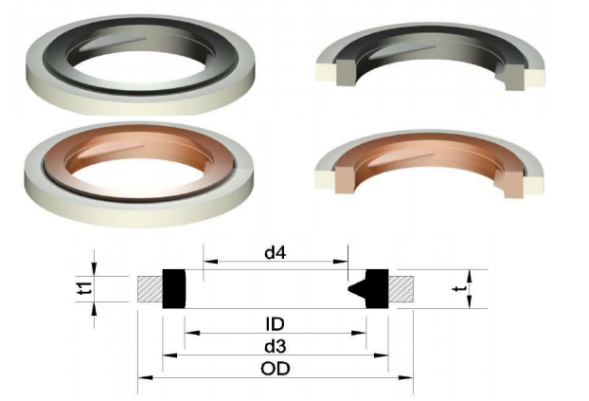gasoline resistant o rings
Understanding Gasoline-Resistant O-Rings Importance, Composition, and Applications
When it comes to sealing solutions that operate effectively in environments with exposure to gasoline and other hydrocarbon fluids, gasoline-resistant O-rings are of paramount importance. These small yet mighty components play a critical role in ensuring the integrity and efficiency of various machinery and equipment across multiple industries, including automotive, aerospace, and manufacturing. This article explores the significance of gasoline-resistant O-rings, their composition, and their many applications.
The Importance of O-Rings
O-rings are circular sealing devices that fit into grooves to create a seal between two or more components. They are designed to prevent the leakage of liquids and gases, contributing to the overall functionality and safety of equipment. In environments where gasoline is involved, it becomes essential to use materials that can withstand the aggressive nature of hydrocarbons without degrading.
Gasoline is a complex mixture of hydrocarbons, which can severely affect materials that are not specifically engineered to resist such chemicals. When O-rings degrade, they can lead to fluid leakage, which poses significant risks not only to equipment performance but also to safety and environmental health. Therefore, the selection of the appropriate O-ring material is crucial when designing systems that will come into contact with gasoline.
Composition of Gasoline-Resistant O-Rings
Gasoline-resistant O-rings are typically made from materials specifically formulated to withstand the harsh effects of gasoline and similar substances. Some of the most commonly used materials include
1. Nitrile Rubber (NBR) Known for its excellent resistance to petroleum-based oils and fuels, NBR is the most widely used material for O-rings exposed to gasoline. It retains good mechanical properties across a wide range of temperatures but does have limitations regarding heat resistance.
2. Fluoroelastomers (FKM) FKM O-rings, like those made from Viton®, offer superior thermal stability and chemical resistance compared to NBR. They can endure higher temperatures, making them suitable for high-performance applications and situations where exposure to steam or other aggressive chemicals occurs.
3. Polyurethane (AU) AU O-rings provide excellent abrasion resistance and elasticity, although they are less commonly used for gasoline service than NBR or FKM. They may be chosen for specific applications requiring high tear strength and resilience.
gasoline resistant o rings

4. Ethylene-Propylene Diene Monomer (EPDM) While primarily known for its excellent weathering properties, EPDM O-rings can be resistant to certain chemical exposures, including some gasoline blends. However, they generally are not recommended for standard gasoline applications.
5. Silicone Rubber While silicone O-rings offer low compression set and good thermal stability, they are typically not recommended for gasoline exposure due to their susceptibility to swelling and degradation.
Applications of Gasoline-Resistant O-Rings
Gasoline-resistant O-rings find applications across various industries, primarily those related to transportation and energy. Some of the key applications include
- Automotive Gasoline engines use O-rings in fuel pumps, injectors, and fuel tanks to create leak-proof seals, ensuring efficient performance and preventing the risk of fire or explosion from leaked fuel.
- Aerospace In aviation technology, O-rings are critical for ensuring that fuel systems operate effectively under high-pressure conditions while withstanding exposure to various fuels, including aviation gasoline.
- Industrial Equipment Many machines that handle gasoline or gasolines mixed with other materials, like lubricants, benefit from O-rings in their hydraulic systems and pump seals, enabling smooth operation without fluid loss.
- Marine Boats and ships often require gasoline-resistant O-rings for their fuel systems, supporting safe and efficient performance even in harsh marine environments.
Conclusion
Gasoline-resistant O-rings are integral components in numerous systems where hydrocarbons are present. Their ability to maintain a reliable and durable seal ensures both the performance and safety of machines and equipment. When selecting O-rings, it is essential to consider the specific material properties and the environment in which they will be used. As technology evolves, the development of more advanced materials will continue to enhance the reliability and efficiency of these crucial sealing solutions, supporting industries that are heavily reliant on gasoline and other derivatives.
-
Simplifying Oil Changes: A Comprehensive Guide to Oil Drain Plugs and Their Variants
News Aug.04,2025
-
Mastering Oil Drain Maintenance: Solutions for Stripped, Worn, and Upgraded Oil Plugs
News Aug.04,2025
-
Fixing Oil Pan Plug Issues: Leaks, Stripped Nuts, and the Right Replacement Solutions
News Aug.04,2025
-
Everything You Need to Know About Oil Drain Plugs: Sizes, Fixes, and Upgrades
News Aug.04,2025
-
Choosing the Right Oil Drain Plug: A Guide to Sizes, Materials, and Drain Innovations
News Aug.04,2025
-
A Complete Guide to Automotive Drain Plugs: Types, Problems, and Innovative Solutions
News Aug.04,2025
-
The Ultimate Guide to Car Repair Kits: Tools and Essentials Every Driver Should Own
News Aug.01,2025
Products categories















